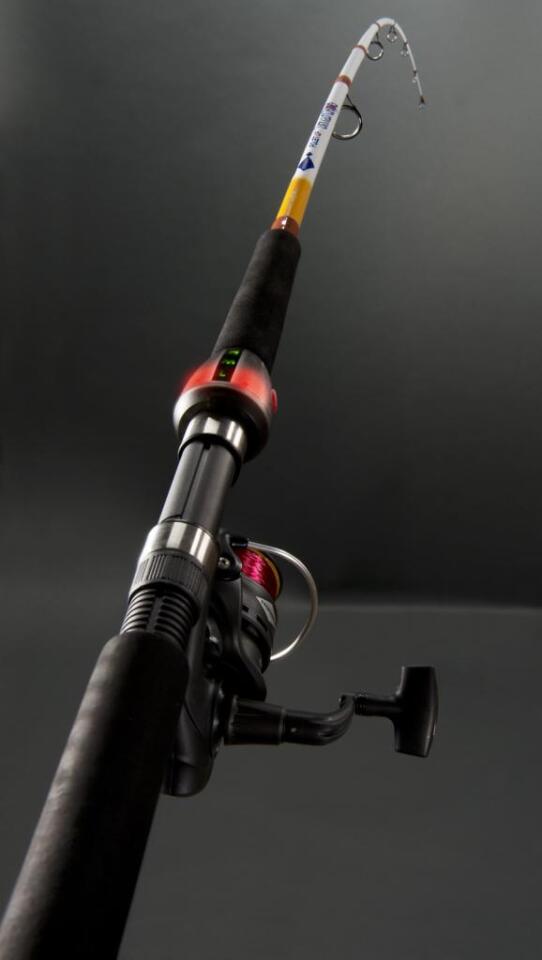Imagine that you’re an angler who has several lines in the water at once. How will you know if a fish strikes on one of your unmanned rods? Well, you could attach a bell to each rod, or just listen for its reel to start running. In these days of electronic everything, however, another alternative is now in the works – the computerized POLETAP SMARTROD.
The water-resistant rod is the creation of Kansas-based inventor Ed Hope. It works with any reel, and contains an accelerometer that detects the telltale jerk of a fish taking the lure.
Using a single-button control, users can switch between High, Medium and Low sensitivity settings. Medium and Low are intended for situations such as trolling or fishing in rain storms, in which the rod is likely to be subjected to a lot of non-fish-caused movements. Even in the High sensitivity setting, however, the rod can reportedly be carried around without accidentally going off.

When a fish strike is detected, the SMARTROD responds with an auditory alarm and flashing red LEDs – the alarm can be disabled, in order to avoid annoying one’s fellow anglers. Once the user starts reeling the line in, the fish-detecting microprocessor temporarily shuts down. This keeps the rod from flashing, shrieking and generally carrying on throughout the fish-landing process. Once the line is cast out again, however, the system is automatically re-activated.
For “slow-striking” fish that don’t yank quite so hard on the line, a tilt alarm function can also be selected. This detects any significant change in the angle of the rod, as might occur if something were slowly but surely making off with the lure – it will also let the user know if the rod has simply fallen over.
The SMARTROD requires two CR2032 lithium cell batteries, which are said to be good for one to two seasons of use (depending on how much action the rod sees). It comes in two versions – a 7-foot (2.1-meter) two-piece medium action spinning rod, and a 6.5-foot (2-meter) two-piece medium action spincast rod.
Hope is currently raising production funds for the SMARTROD, on Indiegogo. A pledge of US$55 will get you one of the rods when and if they’re ready to go, although non-U.S. residents will have to add another $55 for shipping.
More information is available in the video below.
Source: Indiegogo





